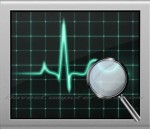
System monitoring tools, which display core temps, fan speeds, etc. in real time, can be a very useful addition to the desktop. I’ve written about these types of tools previously, notably MooO System Monitor…
There are lots of reasons why a user might like to keep a watchful eye on critical system components, and core temps in particular. Just recently, another of these tools, Open Hardware Monitor, was recommended to me by Bill Mullins. This came about following a recent article by fellow author Marc Thomas about PC cooling systems and how regular cleaning inside the tower can help maintain optimum cooling efficiency.
Anyway, following Bill’s advice I checked out Open Hardware Monitor on the home site and the first thing that caught my attention was an option to display user selected fields in the form of a desktop gadget… sounds good. I further discovered that this neat little system monitoring tool is also portable, no installation required… now I’m hooked!
Open Hardware Monitor – The software
The following is the developer’s description as it appears on the home page:
The Open Hardware Monitor is a free open source software that monitors temperature sensors, fan speeds, voltages, load and clock speeds of a computer.The Open Hardware Monitor supports most hardware monitoring chips found on todays mainboards. The CPU temperature can be monitored by reading the core temperature sensors of Intel and AMD processors. The sensors of ATI and Nvidia video cards as well as SMART hard drive temperature can be displayed. The monitored values can be displayed in the main window, in a customizable desktop gadget, or in the system tray. The free Open Hardware Monitor software runs on 32-bit and 64-bit Microsoft Windows XP / Vista / 7 and any x86 based Linux operating systems without installation.
Open Hardware Monitor – Download and usage
Download is a mere 515KB zip folder extracting to 1.26MB (Windows 7 Home Premium 64-bit). Running the program is simply a matter of double clicking the extracted executable.
In the following screenshots I’ve resized the main interface so it shows all included components and then split it in two so I could display each screenshot side by side and save real estate. In reality, the interface obviously continues on down the screen and includes a vertical scroll bar:
Of course, this is a tad intrusive to leave displaying permanently, but here comes the good bit – the user can choose to display selected fields in a much smaller and less intrusive gadget style. To do that, just right click on each item you wish to include and select “Show in Gadget”
And… voila! You end up with something like this:
Monitoring covers all critical hardware components, including Mainboard, CPU, RAM, GPU, Fan Controllers, and Hard Disk Drives.
Options are somewhat limited but do include a choice between Celsius and Fahrenheit for temperature display.
Bottom Line
Comparisons between Open Hardware Monitor and MooO System Monitor are inevitable. Fundamentally, they are very similar; both are free, both are portable, both monitor critical components in real time, and both can be made unobtrusive. MooO has the advantage of including many more “fields” for monitoring, more than 70 in total. However, Open Hardware Monitor does include all critical fields, and the ability to create a customized gadget adds a lot of appeal.
In the end, it’s totally subjective… whichever best suits an individual’s purposes. I kinda lean toward Open Hardware Monitor myself, it includes all the fields I would generally need, plus I just happen to like gadgets. 
- Access the home page and download direct from the developer here: Open Hardware Monitor Home Page

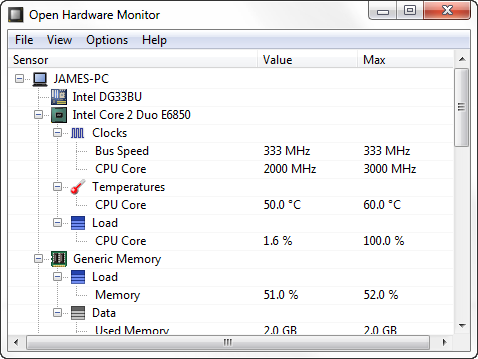

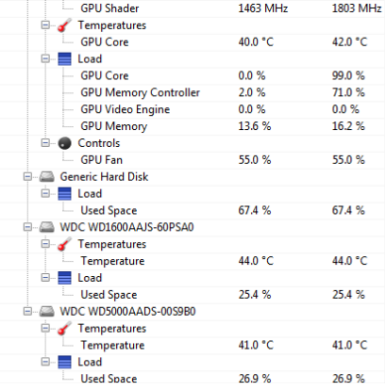
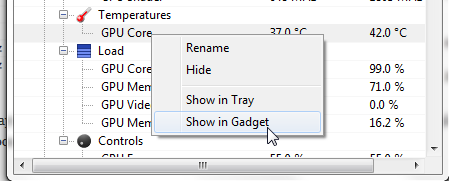
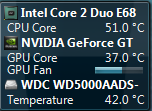
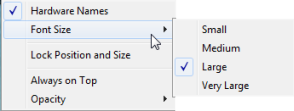
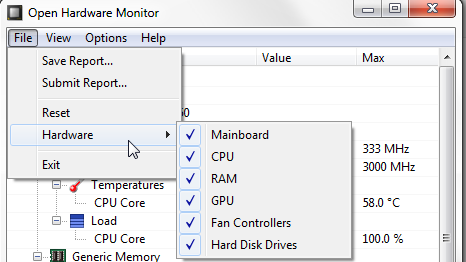
No comments:
Post a Comment